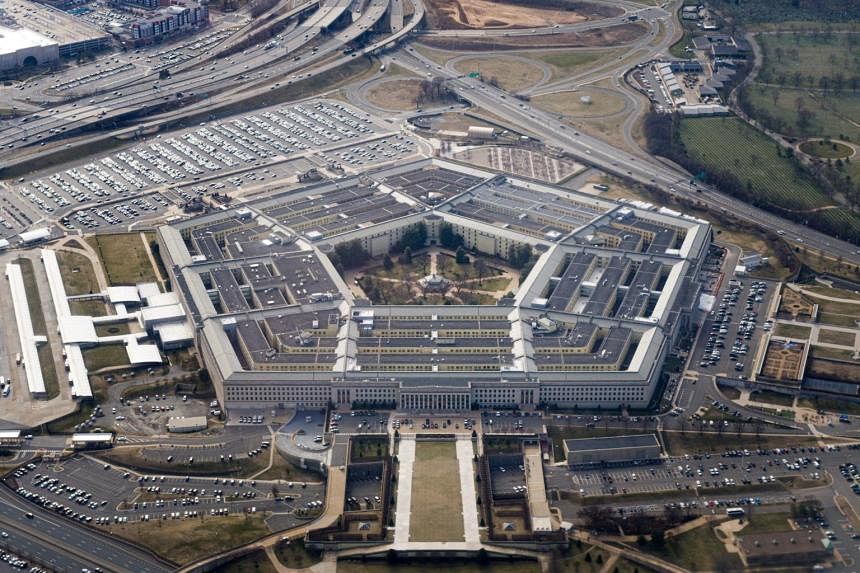WASHINGTON (NYTIMES) - The Pentagon on Thursday (Aug 26) announced sweeping changes aimed at reducing risks to civilians in US military operations by fostering a culture in which those in the field view preventing such harm as a core part of their missions.
A 36-page action plan directs broad changes at every level of military planning, doctrine, training and policy in not only counterterrorism drone strikes but in any future major conflict. It includes emerging war-fighting tactics such as attacks on satellites and computer systems.
The directive - which follows an investigative series by The New York Times into civilian deaths from American airstrikes - contains 11 major objectives.
They are aimed at helping commanders better understand the presence of noncombatants before any operations begin, and they require operators to consider potential consequences for civilians in any combat action.
The steps include putting officials responsible for reducing civilian harm inside the combatant commands and Pentagon policy offices; imposing a new system to reduce the risk of misidentifying targets and "confirmation bias" - the tendency to favour information that confirms pre-existing beliefs; and creating a 30-person centre to handle department-wide analysis and training regarding civilian protection.
In a memo to top military commanders and civilian leaders, Defence Secretary Lloyd Austin said the Pentagon must prioritise civilian protection and incorporate more attentive thinking about that goal as doctrine in its mission planning.
"We will ensure that we are well prepared to prevent, mitigate and respond to civilian harm in current and future conflicts," Mr Austin wrote, adding, "Importantly, this plan is scalable and relevant to both counter-terrorism operations and large-scale conflicts against peer adversaries."
(The term "peer adversaries" is widely understood to be shorthand for major nation-state competitors such as Russia and China, which engage in space and cyberoperations as well as traditional air, land and sea combat.)
Some human rights advocates, who have lobbied the Pentagon for years to strengthen its policies and practices to prevent civilian harm, praised the plan's scope and breadth.
"This is a sea change," said Mr Marc Garlasco, a former Pentagon official who later investigated civilian deaths caused by US military operations for the United Nations. "It doesn't mean civilians won't be killed in war anymore. They will. But if this plan is implemented and properly resourced, it will ensure fewer people will die and create a way for the Defence Department to respond when civilians are killed."
Still, Mr Garlasco said the plan did not fully address several questions, including how the military would improve its ability to estimate civilian casualties; how information from outside groups would be incorporated into the Pentagon's civilian harm assessments; and whether individual officials or commanders would be held accountable for violations.
The plan also does not say whether the new efforts will include reopening or studying past incidents that resulted in civilian deaths.
"Investigating and making amends for past harm is critical to achieving the kind of accountability and learning that the action plan rightly strives for," said Ms Annie Shiel, a senior adviser for the Centre for Civilians in Conflict.
US military members are taught that the laws of war prevent intentionally targeting civilians or carrying out strikes when the anticipated scale of civilian deaths is disproportionate to the combat aim.
Military leaders and presidents have also long articulated a policy of minimising or trying to prevent collateral damage.
Nevertheless, the laws of war and military doctrine accept that some civilian casualties will occur in combat.
But beyond the moral weight of those deaths and damage, the consequences have become far more acute in the 21st century. Among other things, the widespread sharing of videos from cellphones and other sources on social media has sharply increased the risk of backlash that can undermine broader strategic aims.
Against that backdrop, the Defence Department has come under pressure to do more to prevent civilian harm.
Human rights organisations have worked for years to call greater attention to civilian casualties. Reporters at a number of news outlets have written investigative articles about botched strikes. Congress has imposed restrictions on some military funds until the Pentagon submits a civilian casualty policy.
Early this year, the Rand Corp published a congressionally mandated report that critically evaluated the military's procedures on civilian casualties.
Officials have said the Times series, which was awarded the Pulitzer Prize for international reporting this year, had also helped bring about the changes.
It included an investigation into systemic failures to prevent civilian deaths in Iraq, Syria and Afghanistan, based on a trove of internal Pentagon reviews and visits to the sites of more than 100 incidents.
Other parts of the series revealed a covered-up strike in Syria in 2019 that killed dozens of women and children and a botched drone strike in Kabul, Afghanistan, that killed 10 people last August, during the chaotic US withdrawal from that country.
Other highlights from the plan include standardising reporting on how the Pentagon collects, shares and analyses data related to civilian casualties, with a mechanism for the public to submit allegations and new procedures for investigating such claims.
The plan also expands how the US military can respond to victims, including condolence payments to survivors and family members of those harmed, as well as paying for medical care and the repair of damaged infrastructure.
Recent efforts to provide such aid to civilian casualty survivors and their family members have largely faltered. No one has received condolence payments or other forms of monetary assistance from the US military for the drone strike in Kabul last year, for example.

